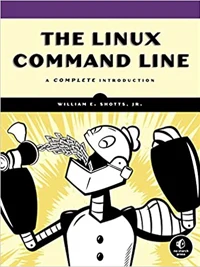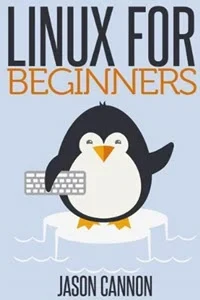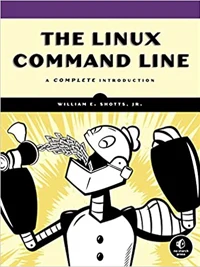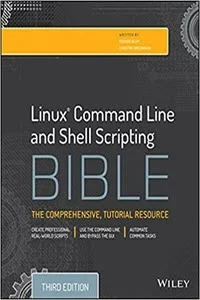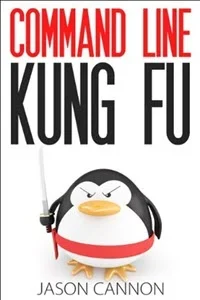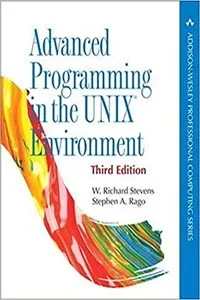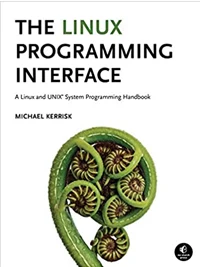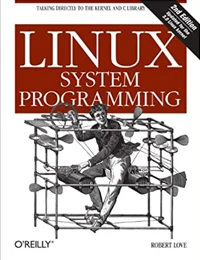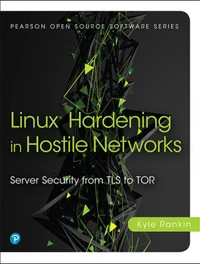Best Books to Learn Linux
FREE Online Courses: Enroll Now, Thank us Later!
In this article, we will look at some of the best books out there on Linux. There is a reason why these books are selling like hotcakes, this is exactly what we will look at! Obviously, rule number one is to not judge a book by its cover, and if at all you are in search of a really good book on Linux, hopefully, you can meet your match after reading through this article. So without further ado, let’s head-on.
Best Books to learn Linux
1. Linux Pocket Guide: Essential commands
The book “Linux Pocket Guide: Essential commands” was written by Daniel J. Barrett. As the name suggests this book helps you gain mastery of the most useful and important commands. This book is the perfect allrounder, it is amazing for novices to learn and explore the different commands mentioned in the book and an excellent reference book for experts.
The Linux pocket guide book provides an organized learning path for you to master your day-to-day commands in Linux. This popular book is the perfect on-the-job reference. The all-new 3rd edition features new commands for processing image and audio files, running programs, killing programs, modifying the system clipboard, manipulating PDF files, and so many more!
Apart from these, the book also covers topics like:
1. Understanding the filesystem and shell
2. Creating and editing files and directories
3. Manipulating text and using pipelines
4. Backups and remote storage
5. Viewing and controlling processes
6. Managing user accounts
7. Becoming the superuser
8. Network connections
9. Installing softwares
10. Writing programming with shell scripts
2. The Linux Command Line
The book “Linux command line” is written by William Shotts. He takes you from zero to hero in the terminal of Linux. The book takes you from your very first terminal keystrokes to writing full programs using a Linux shell or command line. It encourages you to dive below and explore its depths with the power of the command line rather than experiencing the shiny, point-and-click surface of your Linux computer.
The book Teaches you everything from A to Z in the bash terminal, which is the most popular Linux shell. In this book, you will learn beautiful timeless skills handed down by generations like file navigation, environment configuration, command chaining, pattern matching with regular expressions, and more. Apart from these, you will also learn things like:
1. Creating and deleting files, directories, and symlinks
2. Administering your system, including networking, package installation, 3. and process management
4. Use standard input and output, redirection, and pipelines
5. Edit files with Vi
6. Write shell scripts to automate boring and repetitive tasks
7. Slice and dice text files with cut, paste, grep, patch, and sed
3. Linux for Beginners: An Introduction to the Linux Operating System and Command Line
The book “Linux for beginners” is written by Jason Cannon. If you are a complete newbie (even if you never heard the word “LINUX”), this is the perfect book to pick up. you don’t need any prior knowledge of Linux OS. The author guides you from ground zero fundamentals using a step-by-step logical and systematic approach. Jason really mastered the art of explaining really technical stuff in plain simple, and even layman’s language.
Some of the topics you will learn in this book are:
1. How to get access to a Linux server if you don’t already.
2. What a Linux distribution is and which one to choose.
3. What software is needed to connect to Linux from Mac and Windows computers?
4. What SSH is and how to use it, including creating and using SSH keys.
The file system layout of Linux systems and where to find programs, configurations, and documentation.
6. The basic Linux commands you’ll use most often.
7. Creating, renaming, moving, and deleting directories.
8. Listing, reading, creating, editing, copying, and deleting files.
9. How to use the nano, vi, and emacs editors.
10. How to switch users and run processes as others.
4. Linux Command Line and Shell Scripting Bible
The book “Linux Command Line and Shell Scripting Bible” is written by Richard Blum. This is your go-to book when it comes to reference. It is the only book your need as it works like one big valuable cheat sheet! The author teaches you how to bypass the graphical interface and communicate directly with your computer, saving time and expanding capability. This book is a complete guide that provides detailed instruction and expert advice working within this aspect of Linux.
The all-new 3rd edition includes thirty pages of new functional examples that are fully updated to align with the latest and greatest Linux features. The book starts with pure fundamentals to expert fields like shell scripting and practical application of commands in automating frequently performed functions. Apart from these, the book also covers topics like:
1. Write simple script utilities to automate tasks
2. Understand the shell, and create shell scripts
3. Produce database, e-mail, and web scripts
4. Study scripting examples ranging from basic to advanced
5. Command Line Kung Fu
The book “Kung Fu” is written by Jason Cannon. This book is packed with dozens of tips and over 100 practical, real-world examples which help you to solve actual problems and accomplish worthwhile goals. The author made sure that Each chapter in the book covers a specific topic and groups related tips and examples together.
The user-friendliness of the book is clearly visible from the very beginning – it has a very comprehensive index, from which you can find every example where a given command is used — even if it’s not the main subject of the tip – look in the index. It will list every single place in the book where that command appears. The book covers topics like:
1. How to quickly and easily repeat commands in your shell history
2. Ways to determine who and what is using the most disk space
3. How to save a copy of your command line session for later reference
4. How to strip out blank lines and comments from files
5. How to control colorized text when using pipes and pagers
6. How to create and use SSH tunnels
7. How to extract specific blocks of text from files or streams of input
8. A quick tip to fix common typos
9. How to edit files over the network
6. Linux Administration
The book “Linux Administration” is written by Jason Cannon. This Linux book is one of the few books that covers different distributions of Linux like Ubuntu Linux, Debian, Linux Mint, RedHat Linux, Fedora, SUSE Linux, Kali Linux, and more. As the name suggests, this book is the go-to material for system administrators. If at all you’re looking to make the jump from being a Linux user to being a Linux administrator, you don’t need to look any further!
This book covers various administration tasks like:
1. Disk management, partitioning, and file system creation.
2. Managing Linux users and groups.
3. How to use the nano, vi, and emacs editors.
4. How to schedule and automate jobs using cron.
5. How to switch users and run processes as others.
6. How to configure sudo.
7. How to find and install the software.
8. Managing processes and jobs.
9. Several Linux commands you’ll need to know.
10. Linux shell scripting.
7. Linux: The Complete Reference
The book “Linux: the complete reference” is written by Richard Petersen. As the name hints, it is the complete reference for various Linux features, tools, and utilities. This book is also aimed at users of various Linux distributions like Ubuntu Linux, Debian, Linux Mint, RedHat Linux, Fedora, SUSE Linux, Kali Linux, and more.
In this book, Richard explained many topics like how to get up and running on Linux, use the desktops and shells, manage applications, deploy servers, implement security measures, and handle system and network administration tasks.
Apart from these wonderful topics, the book also covers topics like:
1. Install, configure, and administer any Linux distribution
2. Work with files and folders from the BASH, TCSH, and Z shells
3. Use the GNOME and KDE desktops, X Windows, and display managers
4. Set up office, database, Internet, and multimedia applications
5. Secure data using SELinux, Netfilter, SSH, and Kerberos
6. Encrypt network transmissions with GPG, LUKS, and IPsec
7. Deploy FTP, Web, mail, proxy, print, news, and database servers
8. Administer system resources using HAL, udev, and virtualization
9. Configure and maintain IPv6, NIS, networking, and remote access
10. Access remote files and devices using NFSv4, GFS, PVFS, and NIS
8. How Linux works
The book “How Linux works” is written by Brian Ward. Through this book, the author teaches you the concepts behind the internal of the Linux operating system. Unlike some operating systems (like windows), Linux doesn’t try to hide the important bits from you—it gives you full control of your computer. To truly understand Linux, you to go behind the curtain and understand what happens behind the scenes, like its internals, how the system boots, how networking works, and what the kernel actually does.
The all-new, completely revised second edition of the best selling book, Brian Ward makes the concepts behind Linux internals accessible to anyone curious about the inner workings of the operating system. Inside this immersing book, you’ll find the kind of knowledge that normally comes from years of experience doing things the hard way. You also will find other topic like:
1. How Linux boots, from boot loaders to init implementations
2. How the kernel manages devices, device drivers, and processes–
3. How networking, interfaces, firewalls, and servers work–
4. How development tools work and relate to shared libraries–
5. How to write effective shell scripts
9. Advanced Programming in the UNIX Environment
The book “Advanced Programming in the UNIX Environment” is written by Stephen A. Rago. This books begins with basic ground zero fundamentals like files, directories, and processes, and only then takes you to more advanced Linux techniques like signal handling and terminal I/O. The author also covers threads and multithreaded programming, and socket-based IPC in this book.
The 3rd edition covers more than seventy new interfaces, including POSIX asynchronous I/O, spin locks, barriers, and POSIX semaphores. Most of the obsolete interfaces have been removed, except for a few that are ubiquitous. This book also supports today’s leading platforms, reflects new technical advances and best practices, and aligns with Version 4 of the Single UNIX Specification.
10. Linux Kernel Development
The book “Linux Kernel Development” is written by Robert Love. The authour gives amazing indepth details about the design and implementation of the Linux kernel. The author presents the matter in such a manner that is beneficial to those writing and developing kernel code.
This book covers major topics like major subsystems and features of the Linux kernel, including its design, implementation, and interfaces.
One of the reasons this book is selling faster than hotcakes is that It covers the Linux kernel with both a practical and theoretical eye, which appeals to readers with a variety of interests and needs. Other topics covered in this book include:
1. An all-new chapter on kernel data structures
2. Details on interrupt handlers and bottom halves
3. Extended coverage of virtual memory and memory allocation
4. Tips on debugging the Linux kernel
5. In-depth coverage of kernel synchronization and locking
11. The Art of UNIX Programming
The book “Art of Unix programming” is written by Eric S. Raymond. The author of this book reveals the software design secrets of the original Unix designers which is how they produce software that is fast, portable, reusable, modular, and long-lived.
Through this book, Eric tries to capture the engineering wisdom and the design philosophy of the UNIX, Linux, and Open Source software development community as it evolved over the past three decades, and as it is applied and used today by the most experienced and professional programmers.
12. Linux in a Nutshell: A Desktop Quick Reference
The book “Linux in a Nutshell” is written by Stephen Figgins, Ellen Siever, Robert Love, and Arnold Robbins. Through this book, th authors explain many things like programming tools, system and network administration tools, filesystem management, the shell, processes, shell programming, managing users, editors, LILO, GRUB boot loaders, and so many more.
The new updated version provides a better focus on Linux system essentials, as well as more coverage of new capabilities such as virtualization, wireless network management, and revision control with git, apart from highlighting the most important options for using the vast number of Linux commands. Apart from these, you will also find many topics like:
1. Get the Linux commands for system administration and network management
2. Use hundreds of the most important shell commands available on Linux
3. Understand the Bash shell command-line interpreter
4. Search and process text with regular expressions
5. Manage your servers via virtualization with Xen and VMware
6. Use the Emacs text editor and development environment, as well as the vi, ex, and vim text-manipulation tools
7. Process text files with the sed editor and the gawk programming language
8. Manage source code with Subversion and git
9. Use the GNOME and KDE desktops, X Windows, and display managers
10. Set up office, database, Internet, and multimedia applications
13. The Linux Programming Interface
The book “Linux Programming Interface” is written by Michael Kerrisk who provides detailed descriptions of the system calls and library functions that you need to learn Linux programming and more.
This book contains more than 500 system calls and library functions, more than 200 example programs, 88 tables, and 115 diagrams!! It also covers various interesting topics like:
1. Read and write files efficiently
2. Use signals, clocks, and timers
3. Create processes and execute programs
4. Write secure programs
5. Write multithreaded programs using POSIX threads
6. Build and use shared libraries
7. Perform interprocess communication using pipes, message queues, shared memory, and semaphores
8. Write network applications with the sockets API
9. Search and process text with regular expressions
10. Manage your servers via virtualization with Xen and VMware
14. Linux System Programming: Talking Directly to The Kernel And C Library
The book “Linux System programming” is written by Robert Love, and it provides wonderful learning material on Linux system programming, and a beautiful reference book on Linux system calls. In this book, Robert clearly distinguishes between POSIX standard functions and special services offered only by Linux.
In the new edition of the book, he also added, a new chapter on multithreading, this updated and expanded edition provides an in-depth look at Linux from both a theoretical and practical perspective over a wide range of programming topics that include:
1. A Linux kernel, C library, and C compiler overview
2. Basic I/O operations, such as reading from and writing to files
3. Advanced I/O interfaces, memory mappings, and optimization
4. The family of systems calls for basic process management
5. Advanced process management, including real-time processes
6. Thread concepts, multithreaded programming, and Pthreads
7. File and directory management
8. Interfaces for allocating memory and optimizing memory access
9. Basic and advanced signal interfaces, and their role in the system
10. Clock management, including POSIX clocks and high-resolution timers
15. Linux Administration: A Beginner’s Guide
The book “Linux Administration” is written by Wale Soyinka and it teaches you how you can effectively set up and manage any version of Linux on individual servers. The all-new 7th edition takes a proven step-by-step approach to teach the fundamentals of Linux system administration, including set-up, configuration, maintenance, networking, and security.
Soyinka wrote this book for all beginner-level system and network admins, this beginner’s guide makes it easy for you to translate your basic admin knowledge to Linux system administration. The thoughtful step-by-step design prompts you to follow along and configure your own system. The book is divided into many parts which cover different topics:
1: instructions for Linux server and software installation
2:managing a stand-alone system
3: Linux security and networking
16. Learn Linux quickly
The book “Learn Linux quickly” is written by Ahmed Alkabary. This is the best mook for Linux beginners. If at all the name “Linux” scares you or you are afraid of the terminal, you don’t need to look ant beyond. Most people think that Linux is a sophisticated operating system that only hackers and professional coders use, and thus they abort their dream of learning Linux.
But the truth is that Linux is actually the best operating system that is very simple and easy to use. To pick up and read this book, you need absolutely need no prior knowledge at all. The author brings you all the way from zero to hero in topics like:
1. Installing Linux
2. Over 116 Linux Commands
3. User and Group Management
4. Linux Networking Fundamentals
5. Bash Scripting
6. Automate Boring Tasks with Cron Jobs
7. Create your Own Linux Commands
8. Linux Disk Partitioning and LVM
9. Finding Files on Linux
10. Understanding File Permissions
11. Linux Processes
and so many more!
17. Linux essentials
The book “Linux essentials” is written by Richard Blum and Christine Bresnahan. It provides you provides a solid foundation of knowledge for anyone considering a career in information technology, for anyone new to the Linux operating system, and for anyone who is preparing to sit for the Linux Essentials Exam.
The all-new 2nd edition contains Hands-on tutorials and end-of-chapter exercises and reviews questions that lead you in both learning and applying new information—information that will help you achieve your goals! Apart from these features, the book also covers mindboggling topics in a simple and easy-to-understand manner. These topics include:
1. Accessing lessons that are organized by task, allowing you to quickly identify the topics you are looking for and navigate the comprehensive information presented in the book
2. Discovering the basics of the Linux operating system, including distributions, types of open source applications, freeware, licensing, operations, navigation, and more
3. Exploring command functions, including navigating the command line, turning commands into scripts, and more
4. Identifying and creating user types, users, and groups
18. Linux Hardening in Hostile Networks
The book “Linux Hardening in Hostile Networks” is written by Kyle Rankin. This book is of utmost importance and contains lots of valuable information as In an age of mass surveillance when advanced cyberwarfare weapons rapidly migrate into every hacker’s toolkit, you can’t rely on outdated security methods-especially if you’re responsible for Internet-facing services.
In this book, the author helps you to implement modern safeguards that provide maximum impact with minimum effort and to strip away old techniques that are no longer worth your time. He also provides clear, concise guidance on a modern workstation, server, and network hardening, and explains how to harden specific services, such as web servers, email, DNS, and databases.
Mindboggling technologies once viewed as too complex or mysterious but now essential to mainstream Linux security are also demystified as he uses simple language that is easy to understand. This book also includes a full-blown chapter on the effective incident response that both DevOps and SecOps can use to write their own incident response plan.
Kyle Rankin, through this book, teaches a truck load of amazing topics like:
1. Applying core security techniques including 2FA and strong passwords
2. Protecting admin workstations via lock screens, disk encryption, BIOS passwords, and other methods
3. Using the security-focused Tails distribution as a quick path to a hardened workstation
4. Compartmentalize workstation tasks into VMs with varying levels of trust
5. Hardening servers with SSH, use apparmor and sudo to limit the damage attackers can do, and set up remote syslog servers to track their actions
6. Establish secure VPNs with OpenVPN, and leverage SSH to tunnel traffic when VPNs can’t be used
7. Configuring a software load balancer to terminate SSL/TLS connections and initiate new ones downstream
Summary
This is all about the best linux books to learn and master linux. These books will help you to crack your linux interviews as well.
You give me 15 seconds I promise you best tutorials
Please share your happy experience on Google

